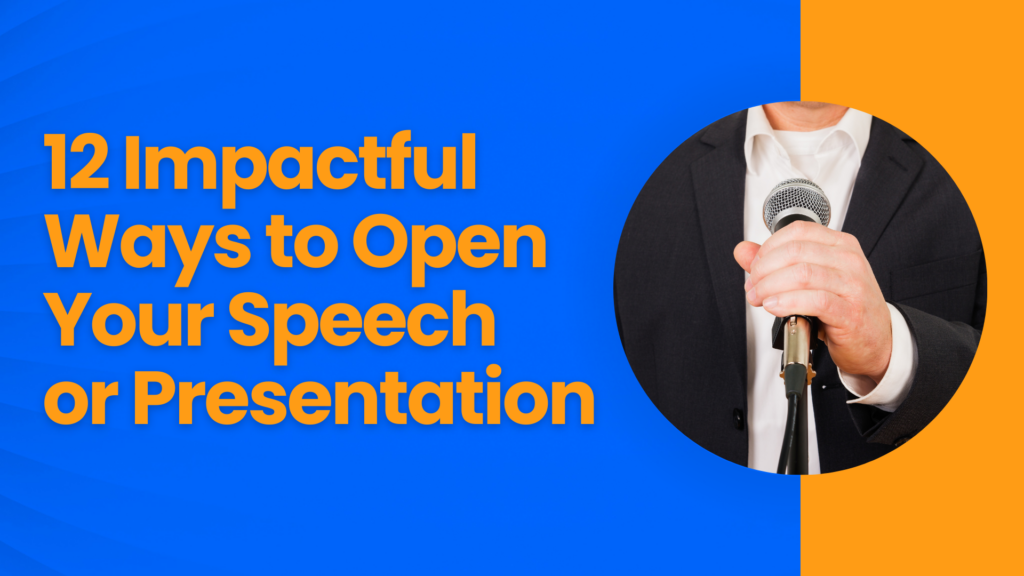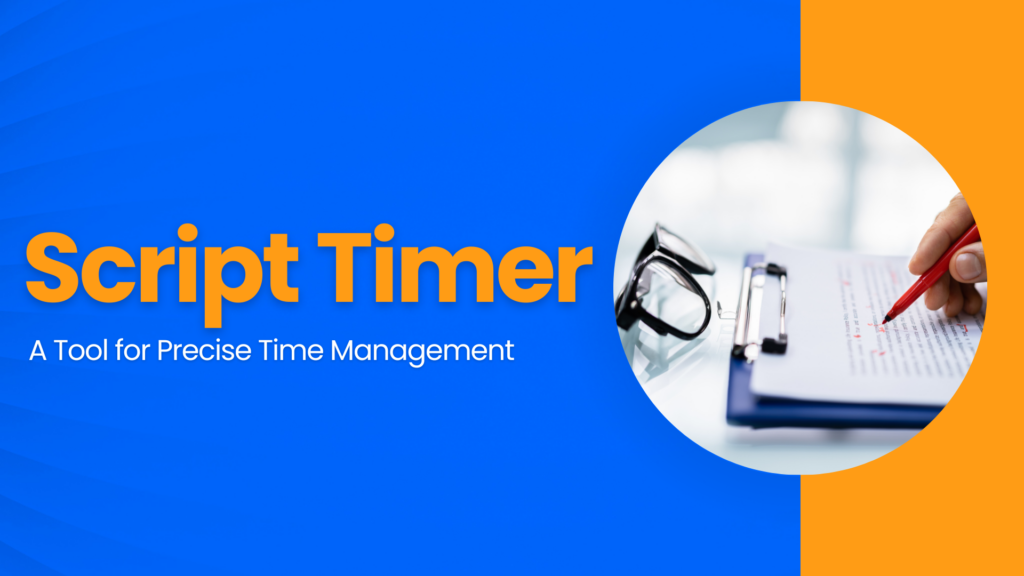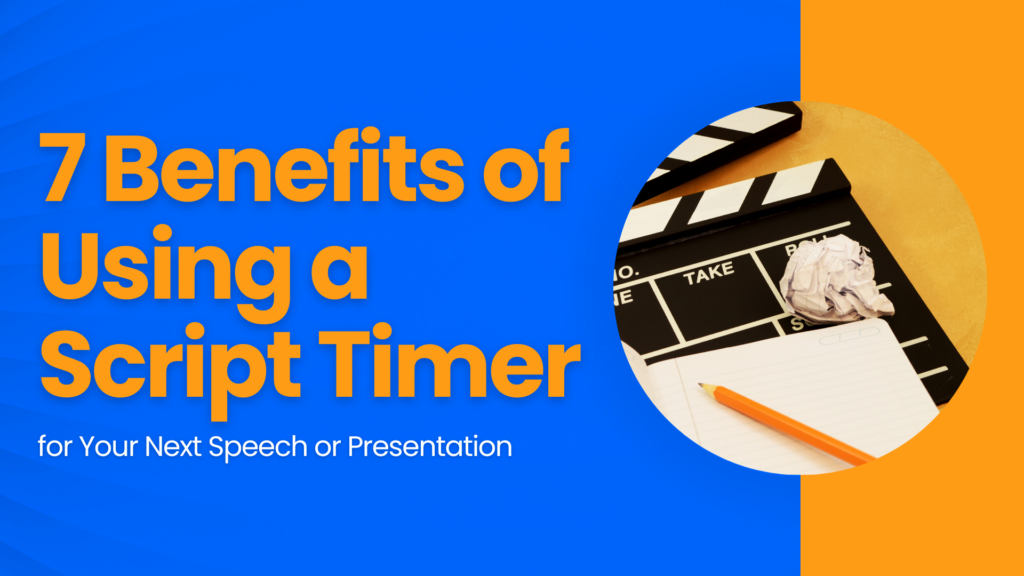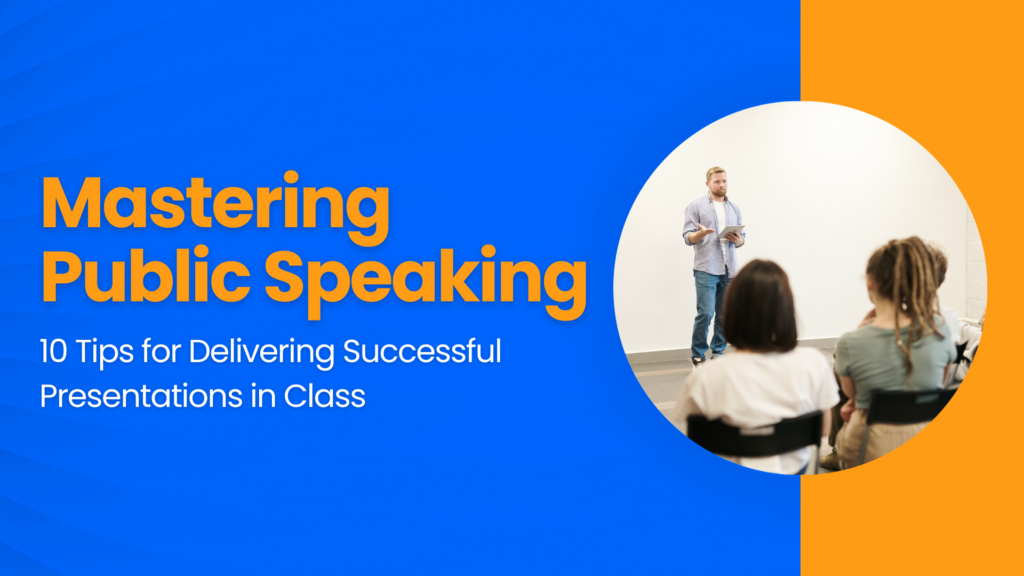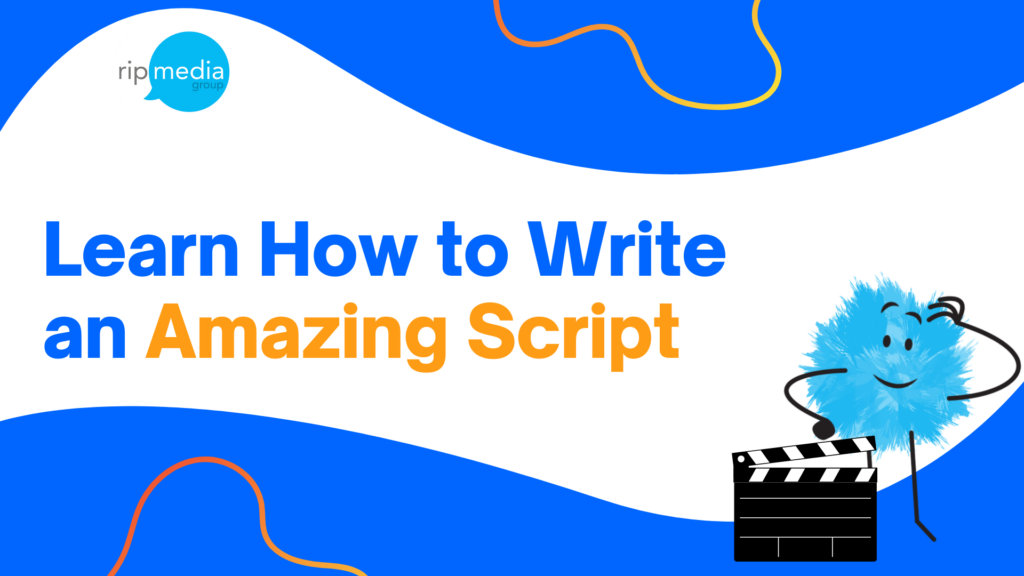Your opening can make or break your presentation. It’s the moment your audience is most attentive.
People form impressions quickly, so you want to use this time wisely to capture their interest and set the tone for the rest of your presentation. The way you open your speech or presentation can either draw your audience in or turn them off, so it’s essential to choose an opening that engages and captivates them.
With that in mind, here are twelve ways to open your speech or presentation and engage your audience from the start. These techniques range from starting with a joke or sharing a personal story to using a visual aid or posing a hypothetical scenario. By selecting an opening technique that aligns with your presentation’s topic and goals, you can set yourself up for success and make a memorable first impression. Whether you choose to start with a thought-provoking question, a bold statement, or a moment of silence, the key is to use your opening wisely and engage your audience right from the start.
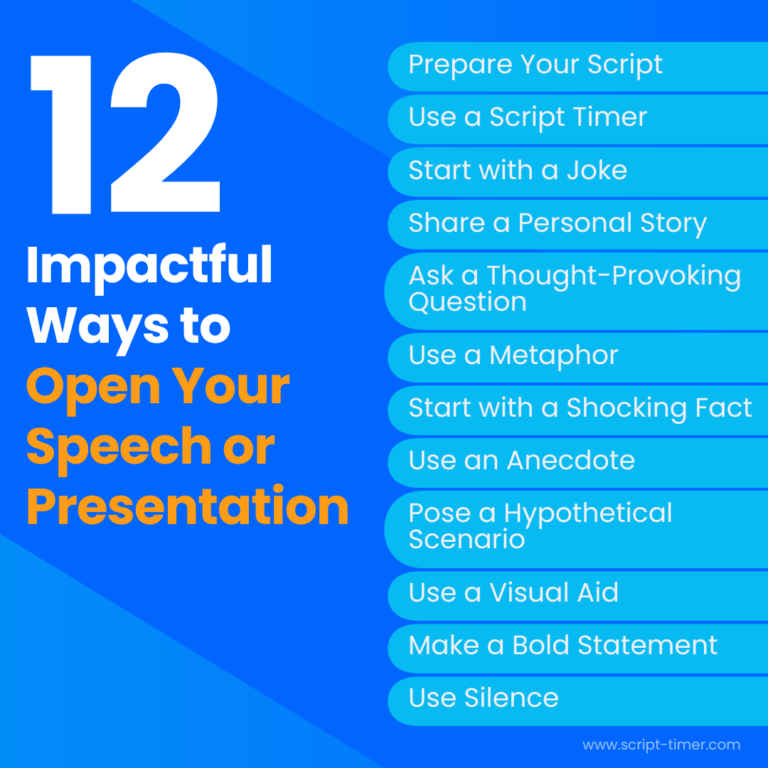
1. Prepare Your Script
Before you can deliver a memorable opening, you need to prepare your script. Take the time to write out your ideas and organize them in a way that makes sense. Use clear and concise language that your audience will understand. Remember, your opening sets the tone for the rest of your presentation. If you need assistance with your script writing, this will help.
2. Use a Script Timer
Using a script timer can help you fine-tune your opening and make sure you don’t go over time. It’s important to keep your opening short and to the point, so you can capture your audience’s attention before they start to tune out.
3. Start with a Joke
Starting with a joke can help break the ice and put your audience at ease. Choose a joke that’s relevant to your topic and appropriate for your audience. This can be an effective way to get your audience to relax and pay attention.
4. Share a Personal Story
Sharing a personal story can help you connect with your audience on a deeper level. Choose a story that’s relevant to your topic and illustrates your point. This can be an effective way to build trust with your audience and get them to engage with your presentation.
5. Ask a Thought-Provoking Question
Asking a thought-provoking question can encourage your audience to think and engage with your topic. Choose a question that’s relevant to your topic and encourage your audience to consider your message. This can be an effective way to get your audience to focus on your presentation.
6. Use a Metaphor
Using a metaphor can help you convey complex ideas in a simple and understandable way. Choose a metaphor that’s relevant to your topic and illustrates your point. This can be an effective way to get your audience to engage with your presentation.
7. Start with a Shocking Fact
Starting with a shocking fact can grab your audience’s attention and make them sit up and take notice. Choose a fact that’s relevant to your topic and will surprise your audience. This can be an effective way to get your audience to pay attention to your presentation.
8. Use an Anecdote
Using an anecdote can help you illustrate your point in a way that’s memorable and engaging. Choose an anecdote that’s relevant to your topic and will resonate with your audience. This can be an effective way to get your audience to connect with your presentation.
9. Pose a Hypothetical Scenario
Posing a hypothetical scenario can encourage your audience to imagine themselves in a particular situation. Choose a scenario that’s relevant to your topic and encourages your audience to consider your message. This can be an effective way to get your audience to engage with your presentation.
10. Use a Visual Aid
Using a visual aid can help you illustrate your point in a way that’s easy to understand. Choose a visual aid that’s relevant to your topic and will help your audience visualize your message. This can be an effective way to get your audience to engage with your presentation.
11. Make a Bold Statement
Making a bold statement can grab your audience’s attention and make them sit up and take notice. Choose a statement that’s relevant to your topic and will surprise your audience. This can be an effective way to get your audience to pay attention to your presentation.
12. Use Silence
Using silence can be a powerful way to grab your audience’s attention and build anticipation. Pause for a few seconds before you start speaking to create a sense of drama and intrigue. Use the pause to gather your thoughts and focus your audience’s attention on you. This can be an effective way to create a memorable opening for your presentation.
In conclusion
There are many ways to open your speech or presentation and engage your audience from the start. By preparing your script, using a script timer, and choosing a relevant and engaging opening technique, you can capture your audience’s attention and set the stage for a successful presentation. Whether you choose to start with a joke, share a personal story, or use a visual aid, make sure your opening is relevant to your topic and will resonate with your audience. Remember, your opening sets the tone for the rest of your presentation, so make it count!
If you want to fast-track your speech and presentation success, you can:
- DOWNLOAD THE 18 SCRIPT TEMPLATES: Use our collection of script templates to take the guesswork out of your podcasting scriptwriting. With these templates, you’ll be able to create compelling content that engages your listeners from start to finish.
- LISTEN TO YOUR SCRIPT: Give your podcast a professional touch by having your scripts read by experienced AI or voice-over artists. Head to Voice123 and find the perfect voice to bring your podcast to life.
- GET PRODUCTION HELP: Take the hassle out of podcast production by enlisting our help. Our team of experts can handle everything from editing to distribution, leaving you free to focus on creating great content. Check out our services page for more information.
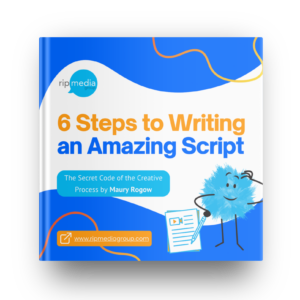
LEARN TO WRITE A SCRIPT
This 20-page complete guide teaches you
the best and proven ways to improve your scripts,
and script-writing. Be better than AI.
